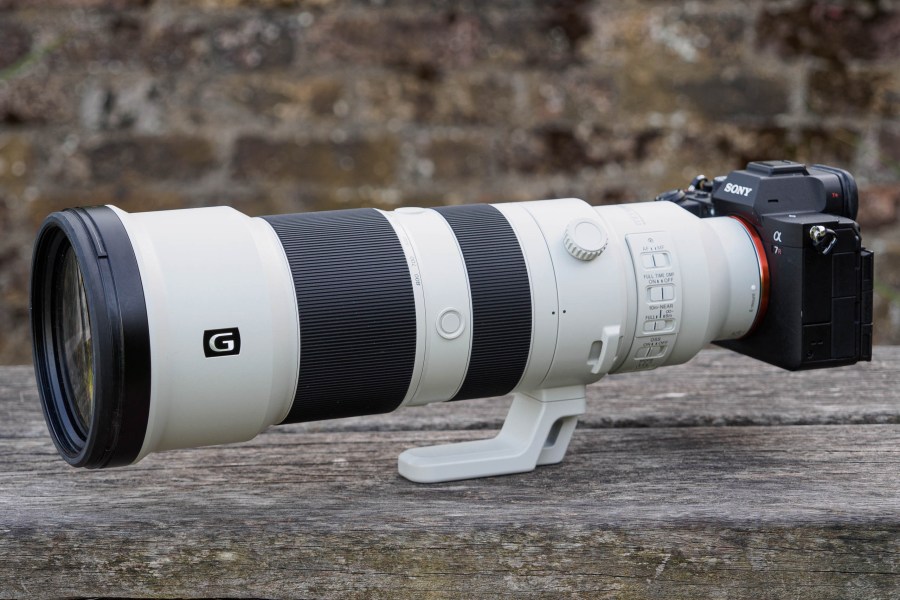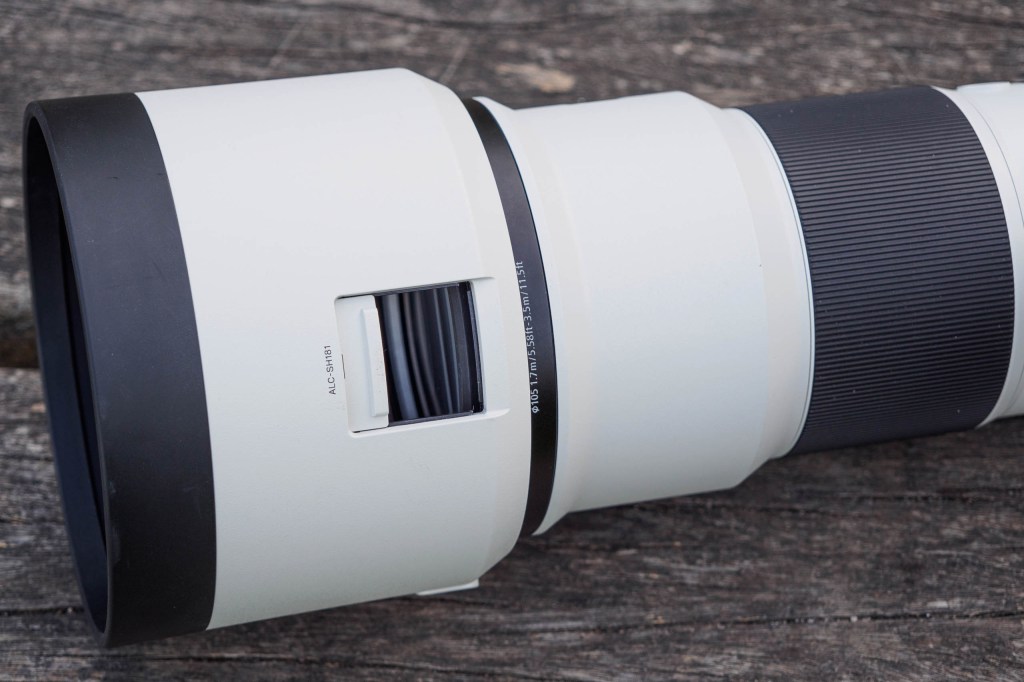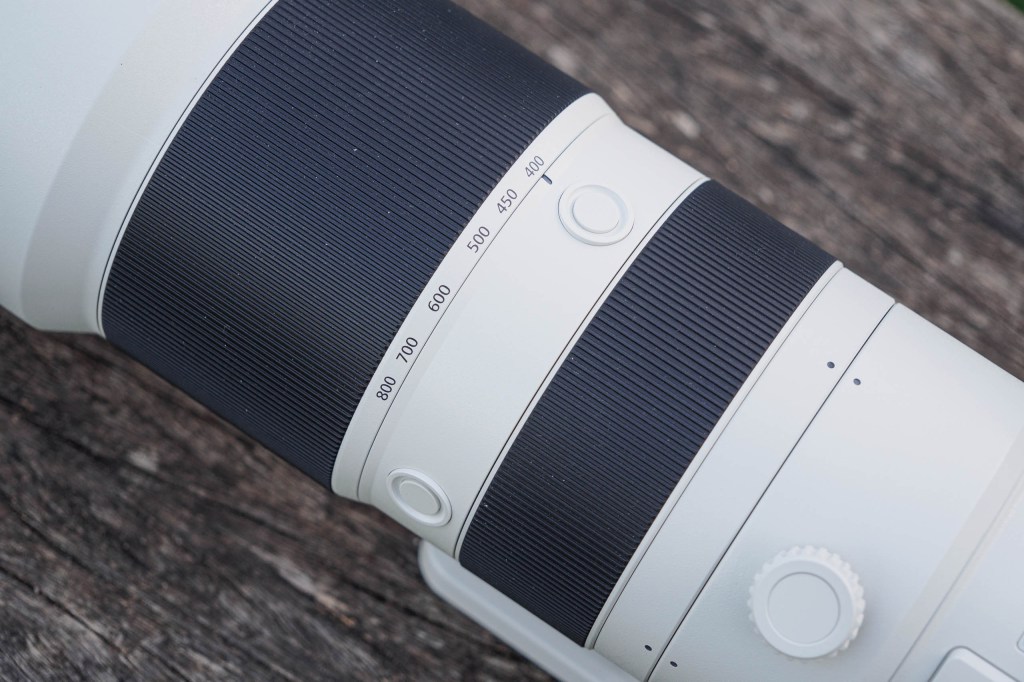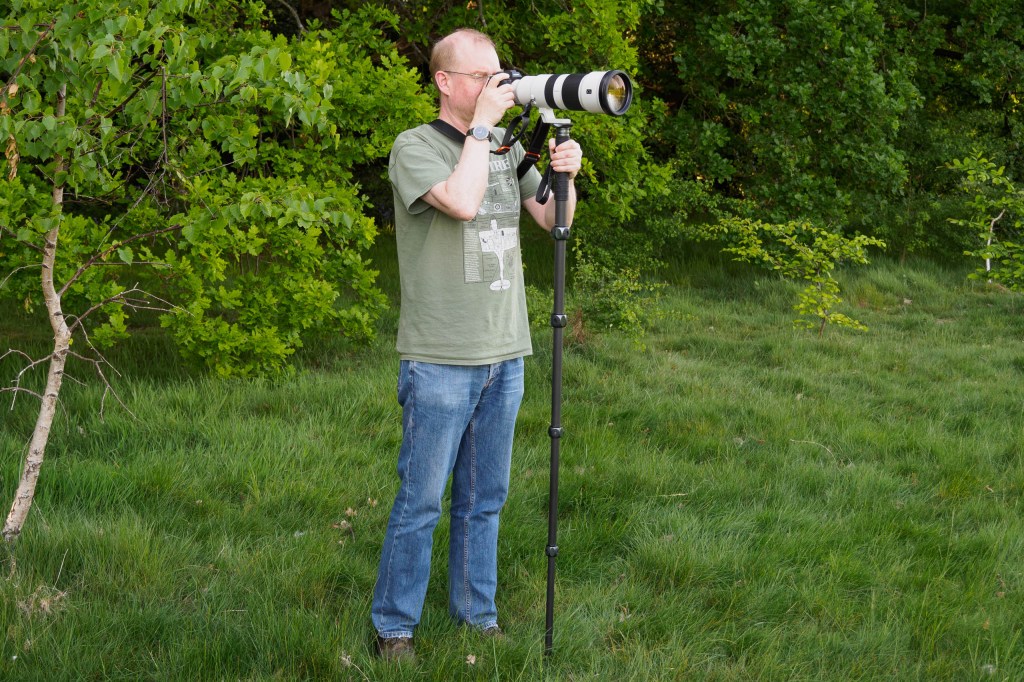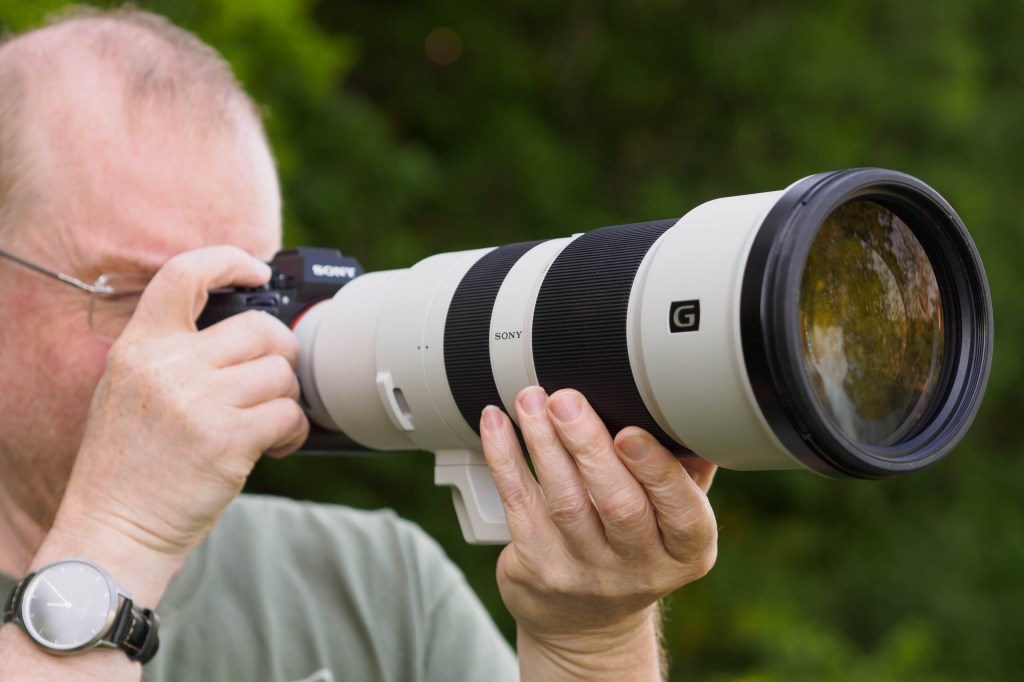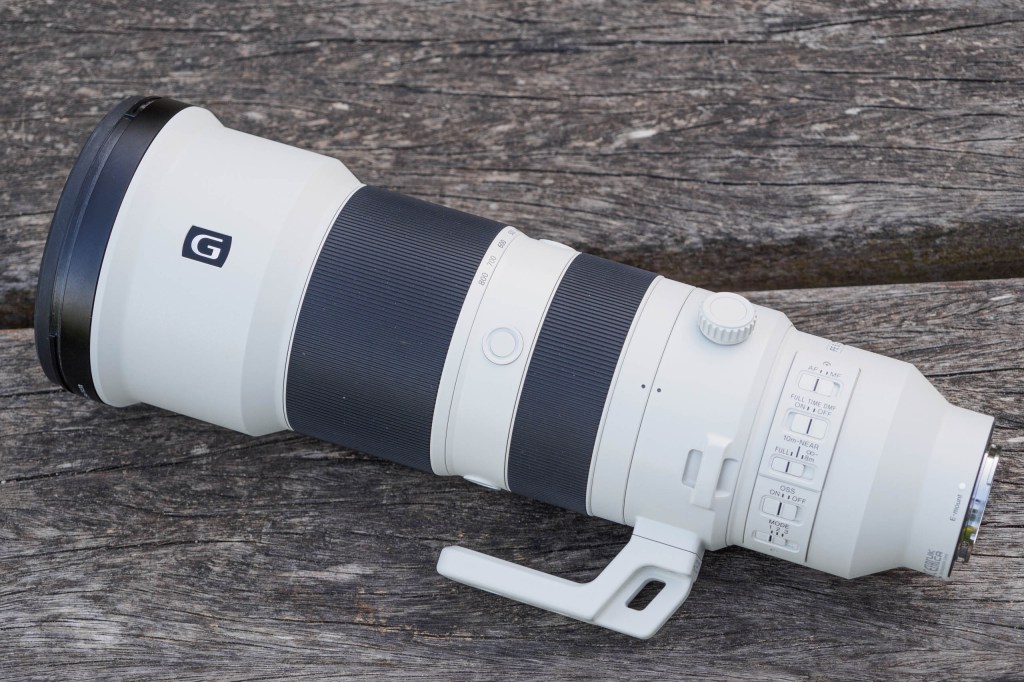Amateur Photographer verdict
The Sony FE 400-800mm F6.3-8 G OSS is a great option for those shooting such things as wildlife. However it’s quite large and heavy and has a restricted zoom range.- Excellent optical quality
- Fast, silent, accurate autofocus
- Very effective stabilisation
- Robust build
- Fairly large and heavy
- Limited zoom range
- Small aperture requires use of high ISOs
The Sony FE 400-800mm F6.3-8 G OSS is an ultra-telephoto zoom for the firm’s full-frame E-mount cameras. As the longest lens available in the system, it’s designed for photographers shooting distant subjects such as wildlife, aircraft, or sports. For those who need even more reach, it’s compatible with 1.4x and 2x teleconverters, giving 560-1120mm and 800-1600mm focal length ranges, respectively.
Sony FE 400-800mm F6.3-8 G OSS at a glance:
- $2899 / £2550
- Ultra-telephoto zoom
- 1.7-3.5m minimum focus
- 105mm filter thread
- 119.8mm diameter, 346mm long, 2475g
- Sony E-mount (full-frame)
While full-frame has largely established itself as the format of choice amongst serious photographers, one area where it’s generally been at a disadvantage lies with long telephoto lenses. Photographers have got used to working conveniently with zooms equivalent to 800mm, 900mm or even longer on bridge, Micro Four Thirds, and APS-C mirrorless cameras. But on full-frame, lenses this long have traditionally been huge and extremely expensive.
Like some other recent designs, the Sony FE 400-800mm F6.3-8 exploits the fact that mirrorless cameras can focus effectively at rather smaller apertures than DSLRs did. This in turn allows telephotos to be made smaller, lighter and cheaper. However, that doesn’t mean the lens is small and cheap; it’s still well over a foot long, weighs in at almost 2.5kg, and costs $2899 / £2550.
While there’s no other lens quite like this for Sony users, it does make for an interesting comparison with ultra-telephoto zooms for other systems. Its closest equivalent is the Canon RF 200-800mm F6.3-9 IS USM, which is smaller, lighter and less expensive, but has a smaller maximum aperture.
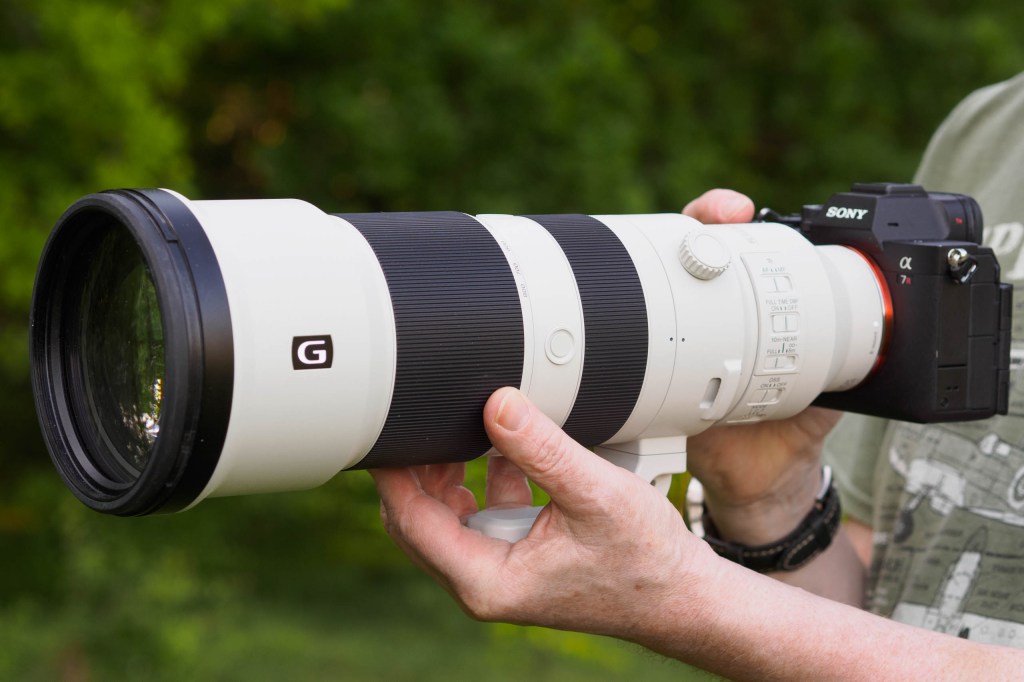
For Fujifilm’s APS-C format X-system, the XF150-600mm F5.6-8 R LM OIS WR offers a 225-900mm equivalent range and again is rather smaller, lighter and cheaper. On Micro Four Thirds, both OM System and Panasonic produce 100-400mm zooms that are much more portable and affordable. So does the Sony 400-800mm really make sense?
Features
As you’d expect, Sony says the lens is designed to combine high image quality, excellent operability, and fast, quiet autofocus. To this end, its optical design employs no fewer than 27 elements in 19 groups. This includes 6 elements made from extra-low dispersion (ED) glass, to minimise colour fringing from chromatic aberration.
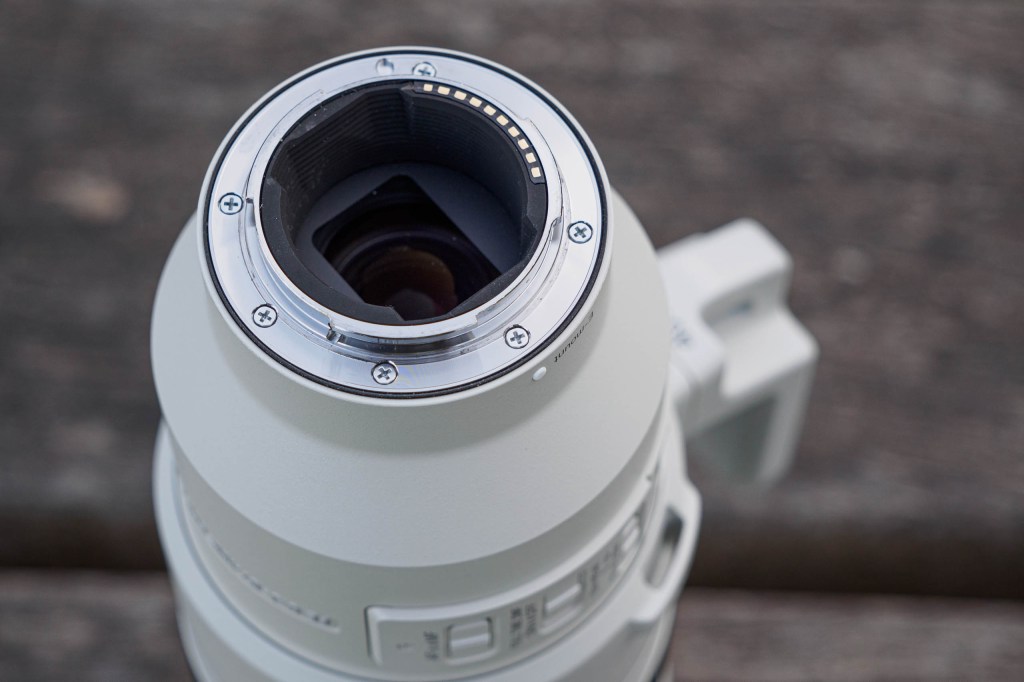
Autofocus is provided by a pair of linear motors, with full support for shooting at 120fps in both stills and video. The minimum focus distance ranges from 1.7m at 400mm, to 3.5m at 800mm. A focus range switch can be used to limit the closest focus distance to 8m, in order to minimise hunting.
Sony says that focus breathing is suppressed optically, and the lens also supports in-camera breathing compensation during video recording.

As befits a lens that will mostly be used outdoors, the barrel boasts dust and moisture-resistant build, plus a fluorine coating on the front element to help keep it clean. Thanks to an internal zoom mechanism, the centre of gravity should stay essentially unchanged on zooming.
The lens accepts front screw-in filters, but at a sizeable (and expensive) 105mm in diameter. A large cylindrical hood comes in the box and includes a sliding door for easy rotation of polarising filters. It also has a locking button that should prevent it coming off by accident.
This lens is designed for use on Sony’s full-frame cameras, most obviously the Alpha 7-series. But it can also be used on the firm’s APS-C mirrorless models such as the A6700, on which it will provide a 600-1200mm equivalent view. Naturally, you’ll also get this range if you switch to APS-C mode on a full-frame camera.
Build and handling
It should come as no surprise, given its focal length range, to learn that the Sony FE 400-800mm F6.3-8 G OSS is something of a beast. At fully 346mm in length and 119.8mm in diameter, it’s not something you can wander around with discreetly. Fit the hood, and the length increases to 44cm. People will notice you using it.
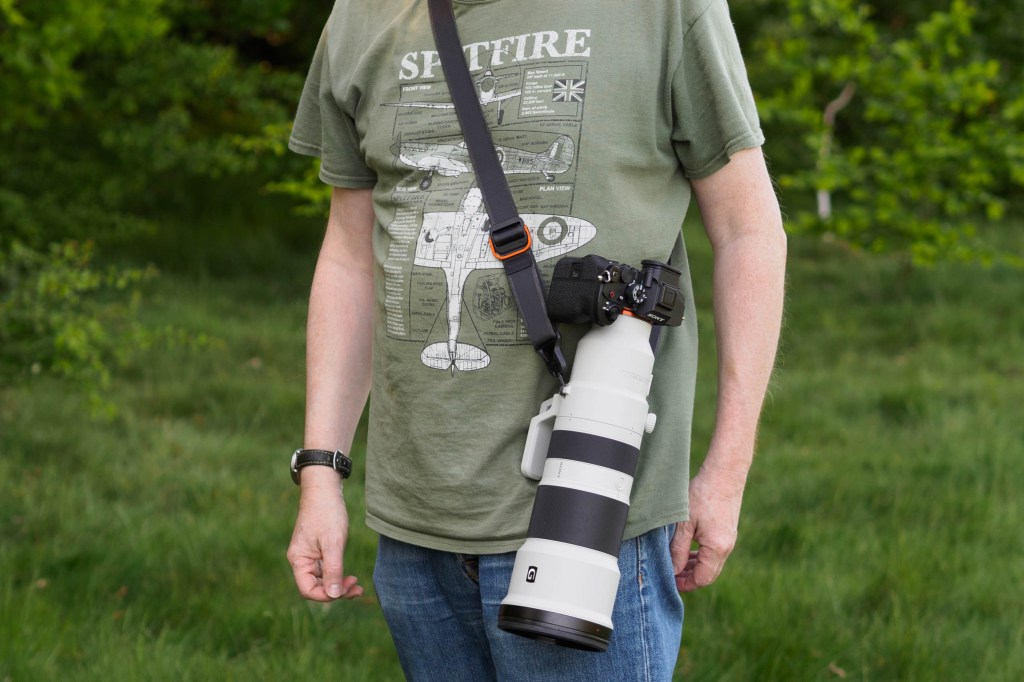
It looks and feels the part, though, with its white-painted barrel. Both the lens and the hood have chunky rubber bumpers at the front to protect against knocks, which is a nice practical touch. The lens has its own strap lugs too, which you’ll need to use, rather than hanging it off a camera. A basic strap comes in the box, but I preferred to use a Peak Design Slide Lite in sling mode.
Sony quotes the weight as 2475g, but again, that’s for the lens alone. Add in the hood and caps, and according to my kitchen scales, you’re looking at carrying around 2785g in total. You’ll probably want to invest in a large, comfortable backpack (I used the Vanguard Alta Sky 42), and maybe a gym membership.
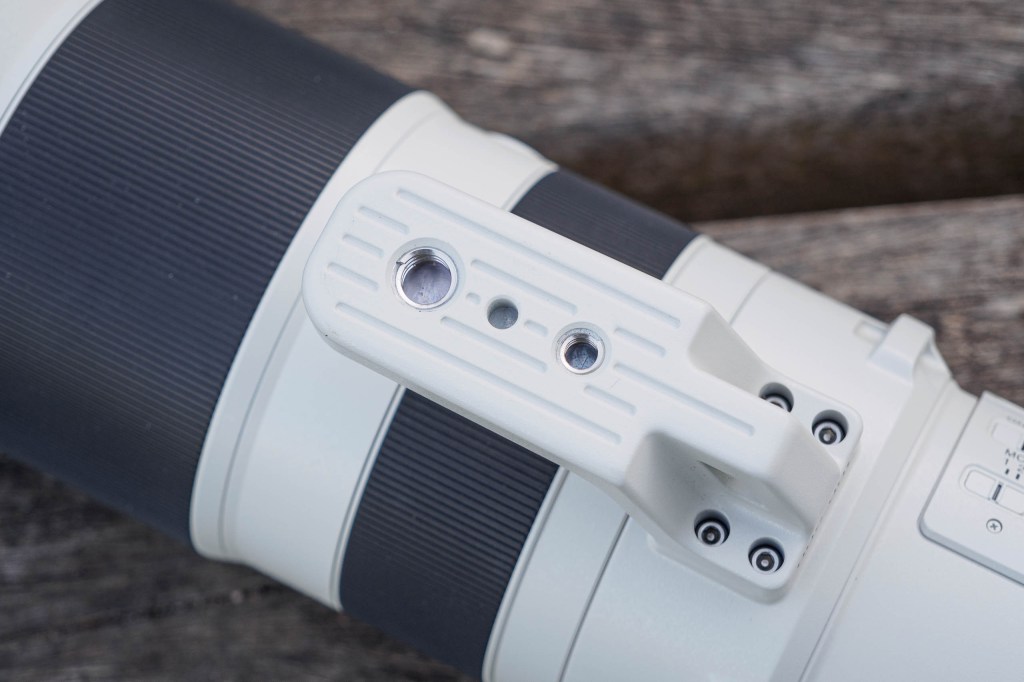
A tripod foot is built-in, with both 1/4in and 3/8in threads for attaching it to a camera support. It can be used quite comfortably as a handle for carrying the lens, but annoyingly it doesn’t have an Arca-Swiss dovetail profile that would allow it to be fixed directly to many tripod and monopod heads. The foot rotates freely through 360° for rotating the camera to portrait format, but unlike on many telephoto zooms, it’s not removable.
Turning our attention to the controls, the broad zoom ring is placed towards the front, and I was really impressed by how quick and smooth the internal zoom mechanism is to operate. You can get from one end to the other with a 90-degree twist, and literally using a single finger. That’s a huge advantage over most other ultra-telezooms, which tend to have extending zoom designs.
The manual focus ring is placed closer to the camera body, rotating smoothly with no end stops. Just in front of it, no fewer than three focus hold buttons are provided for shooting both vertically and horizontally. As usual, they always do the same thing, and their function can be changed using the camera body.
Unlike most of Sony’s other recent lenses, there’s no aperture ring here. But you’ll probably spend most of your time shooting in shutter priority mode, and very likely with the aperture wide open anyway. So that’s no great loss.

An array of switches on one side controls the lens’s functions. The three at the top are for focusing: AF/MF, full-time direct manual focus (DMF) and the three-position focus limiter (with settings for full range, 10m to near, and 8m to infinity).
Below these are the optical stabilisation controls: on/off and OSS mode (marked simply, and somewhat opaquely, 1, 2, and 3). It turns out mode 1 is for normal use, mode 2 for panning, and mode 3 is for shooting erratically moving subjects.
I used the lens with the Sony Alpha A7R V, and I’d put it towards the limit of what I’d be comfortable with shooting hand-held for any great length of time. I mainly put it through its paces by shooting motorcycle racing, and wildlife in my local parks.
For the latter, mobility and flexibility are important, and there I was happy bringing it up to my eye, firing off short bursts, and dropping it back down by my side on its strap. However, with motorsports, where I was generally shooting in one place for a while before moving on, I preferred to use a sturdy monopod (namely the 3 Legged Thing Alana).
Autofocus
As I’d expect from a modern Sony lens, the Sony FE 200-800mm F6.3-8 G OSS has extremely impressive autofocus. In good light, it’s fast, silent, and accurate, essentially doing whatever the camera asks of it. Unsurprisingly, though, the small aperture means that it slows down once light levels drop. I suspect it might struggle with such things as for indoor sports.
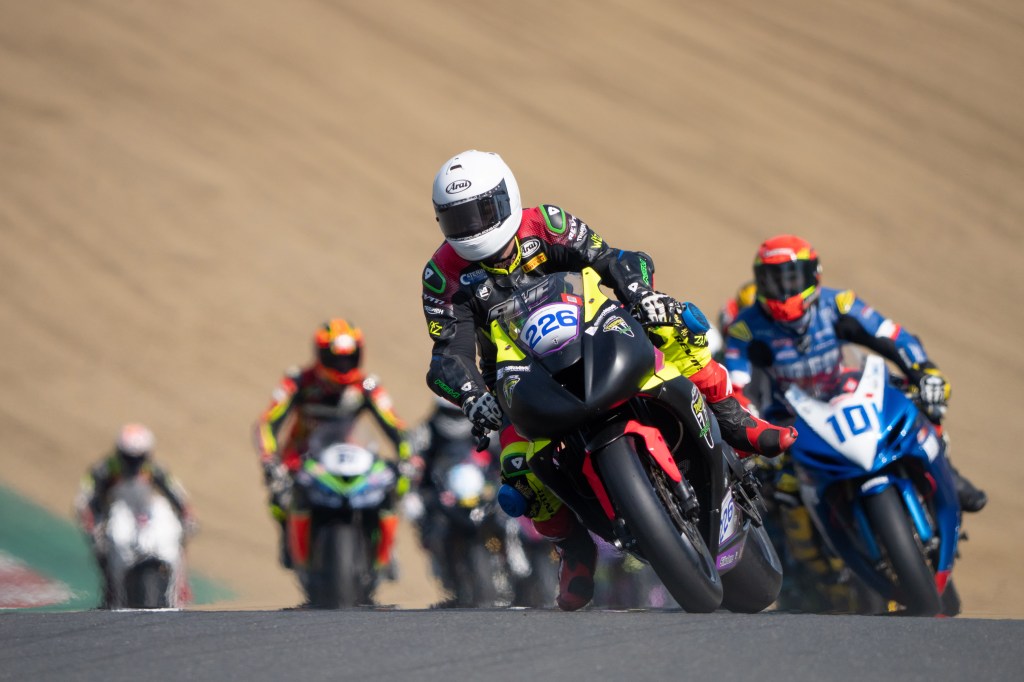
Click on any sample image to see the full resolution version
I used the lens almost exclusively in continuous AF mode, and shooting with subject detection for vehicles, birds or animals as appropriate. As long as I gave the camera a moment to pick up and start tracking a subject, I got a very good percentage of in-focus shots. Overall, I felt the performance was probably limited more by the camera than the lens.
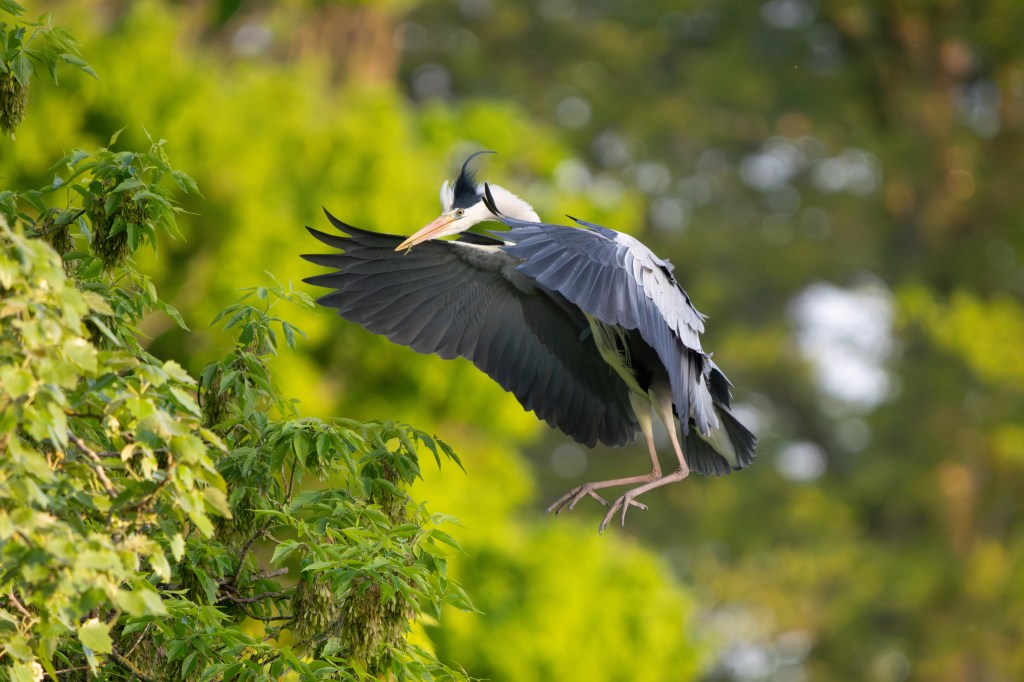
It’s worth noting that if you’re shooting very small subjects such as birds at long distance, the AF system might struggle to pick them up. If you’re using a full-frame camera, switching to APS-C crop mode can genuinely help here, as it effectively magnifies the sensor readout for autofocus.
Performance
So how did the lens perform for me in real-world use? Usually, at this point I’d present a detailed image quality analysis across all focal lengths and apertures. But in a way, that’s only of peripheral interest here.
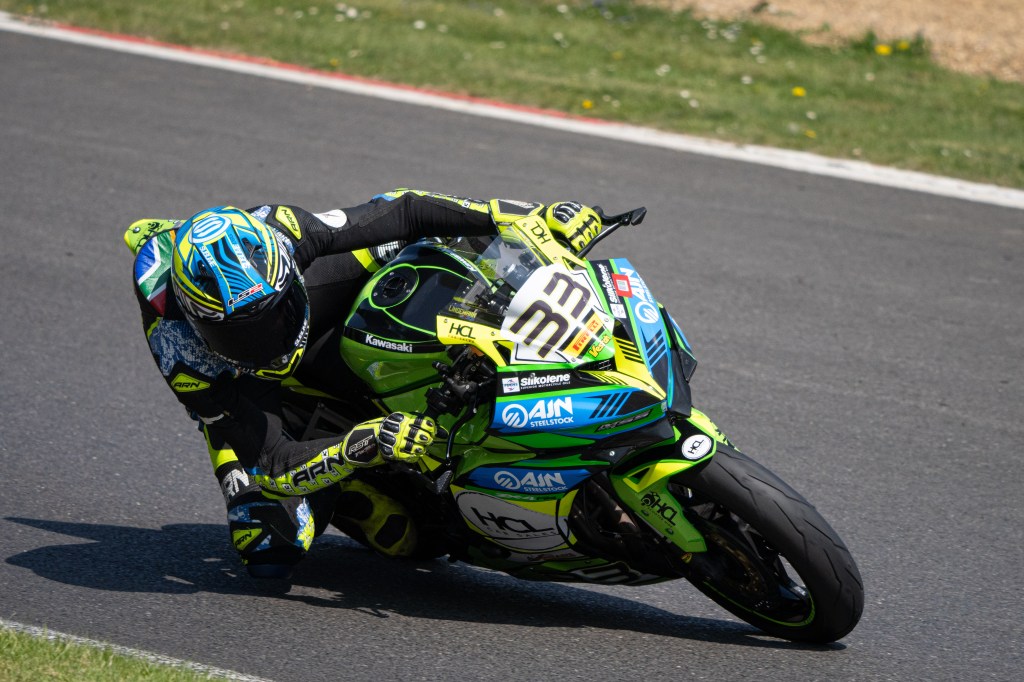
That’s not to say that the lens isn’t sharp – it really is – but rather that in real-world shooting, its sharpness will hardly ever be the limiting factor on the overall image quality. Instead you’ll constantly be fighting against image degradation from such things as subject motion, high-ISO noise, and camera shake.
With this lens, you’re likely to be spending a lot of time shooting moving subjects. So chances are, you’ll frequently be setting fast shutter speeds of at least 1/1000sec to freeze their motion. But with the relatively slow aperture of f/8 at 800mm, you’ll then find yourself using high sensitivities of ISO 1600 or more even on a sunny day.
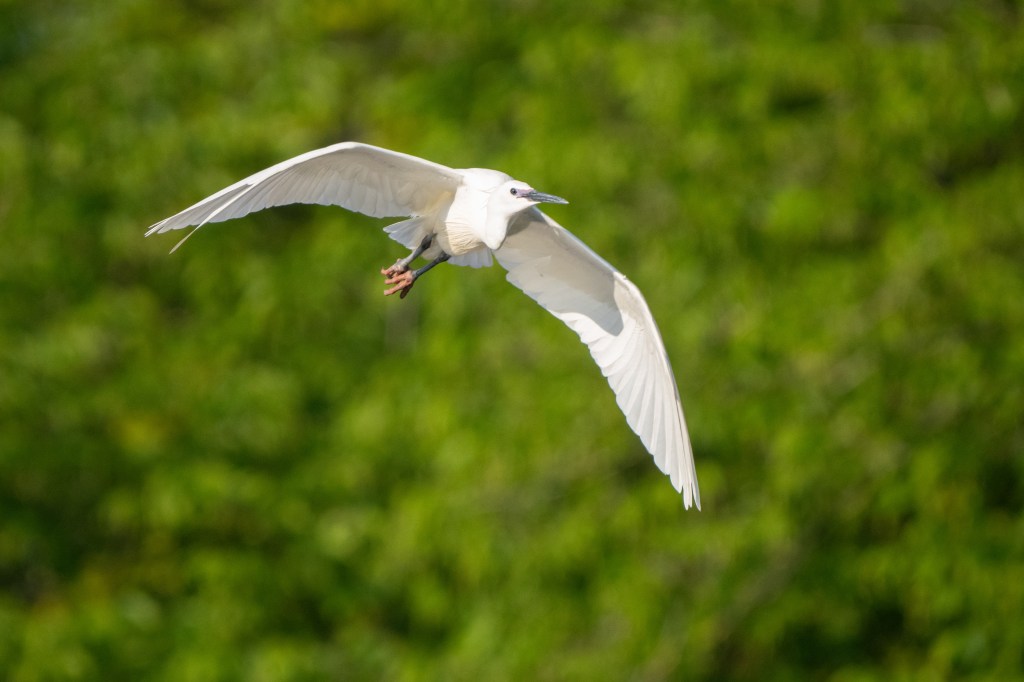
If you need even faster shutter speeds, or to stop down further for more depth of field, that will mean boosting the ISO even further.
At this point, your raw processing skills increasingly come into play, in terms of exploiting noise reduction, clarity and texture sliders to generate the sharpest-looking images.
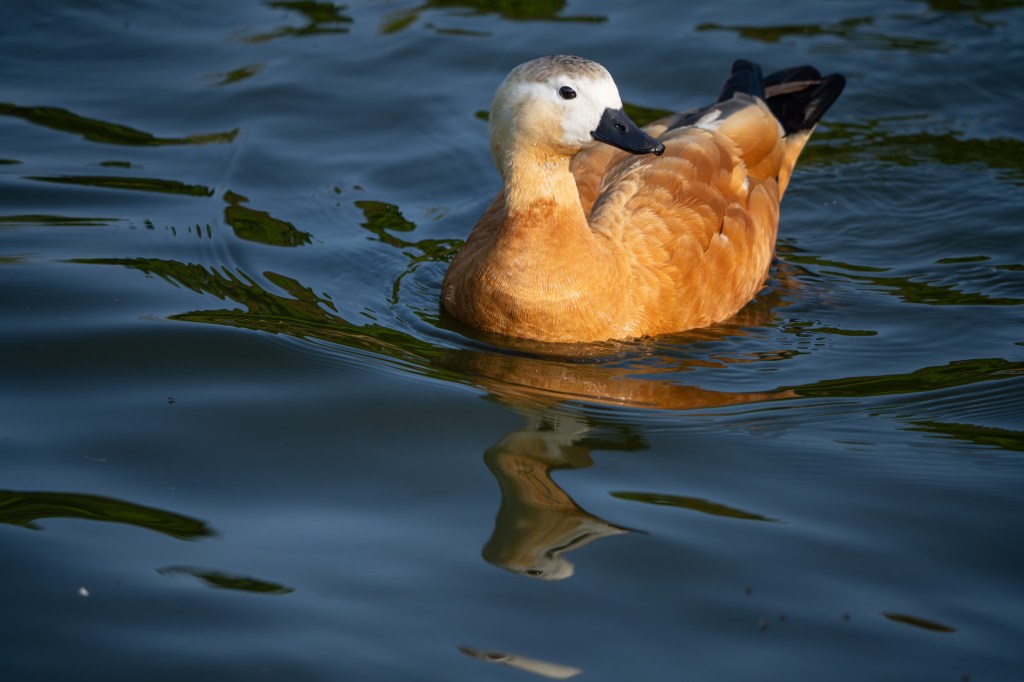
If you do manage to get yourself in a position to shoot at low ISOs, though, you will find the lens is impressively sharp, even on the A7R V’s 60MP sensor. Shooting wildlife can be a tough test, but I found that the lens resolves fine, low-contrast details of feathers and fur with ease.
This sharpness remains important even when you’re shooting at high ISOs, as it gives noise reduction software the best possible data to work with.
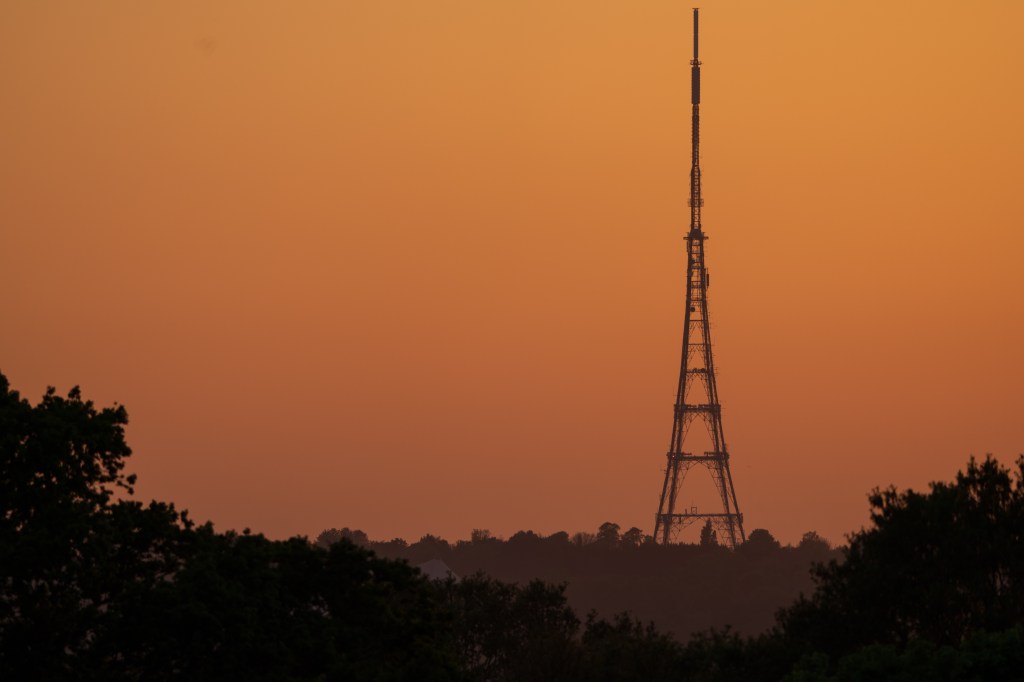
If you look at uncorrected raw files, you’ll see noticeable pincushion distortion throughout the zoom range. But this doesn’t really matter in real-world shooting, as you’re unlikely to be shooting geometrically precise compositions that might reveal it. Distortion will usually be automatically corrected by the camera in JPEG files, too, and by raw processing software once the requisite lens profiles are available.

There’s also marked vignetting at 400mm and f/8, but the easiest remedy for this is simply to keep in-camera shading compensation enabled.
Thankfully image blur from camera shake shouldn’t be a problem, as I found the optical stabilisation to be very impressive indeed. I was able to get some usably sharp shots hand-held at ludicrously low shutter speeds around 1/60sec, even when zoomed all the way in to 800mm.

However, you do need to remember to set the IS to mode 2 for panning shots at slower shutter speeds, or switch it off completely, so the lens’s stabilisation system isn’t constantly fighting against your camera movement.
Our Verdict
Having spent some time shooting with the Sony FE 400-800mm F6.3-8 G OSS, I find myself with mixed feelings about the lens. It has a great deal in its favour – it focuses quickly and quietly, it’s unusually easy to zoom, the stabilisation is incredibly effective, and crucially, the optics are excellent. That 800mm focal length means you really can get up-close to your subject, too. But it’s larger and heavier than I’d really like, and its short zoom range means that it can be surprisingly inflexible in use.
Indeed, my biggest problem with this lens was something I never expected with a full-frame telezoom – quite often, you can’t zoom out wide enough. When I was shooting motorbike racing, for example, on several occasions it was too tight to give a particular composition I had planned. I think you’d often need to pair it with a 100-400mm, which presumably is what Sony has in mind – but that adds even more weight to carry. To me, Canon’s 200-800mm design is a better concept, considered purely in terms of range.
That small aperture can be limiting too, as it requires you to use high ISOs pretty much all the time when shooting anything that moves. As a result, this is very much a lens for shooting in bright light; use it on a dull grey day and I suspect you might be disappointed. Personally, though, I wasn’t too bothered by needing high ISOs, given the capabilities of AI noise reduction software. I’m quite happy to spend a bit of time applying it to my favourite shots.
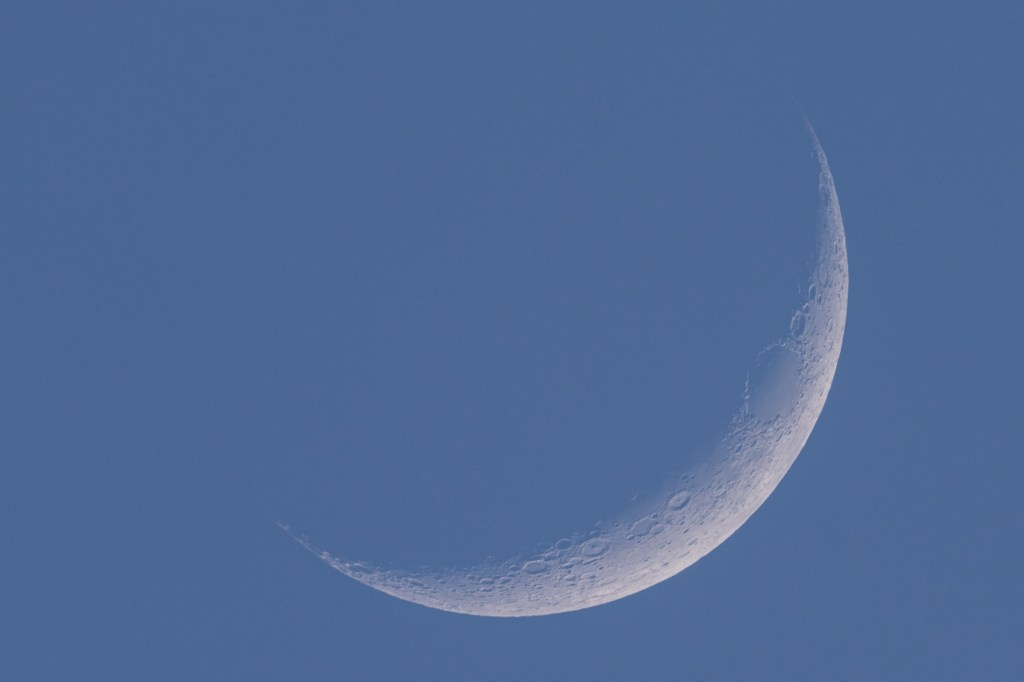
In conclusion, then, the Sony 400-800mm is a really impressive lens, just as long as you can live with its limitations. I think it could be an excellent choice for some specific subjects, such as wildlife or airshows. It’s still not as practical and affordable as ultra-telephoto zooms for smaller formats, though, and more for photographers with sufficiently bulging biceps and wallets. It’s a niche product, but for some users it could fit that niche perfectly.
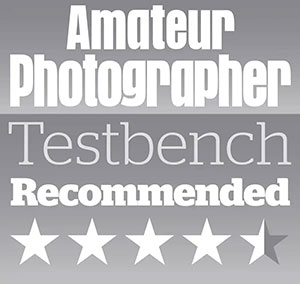
Follow AP on Facebook, X, Instagram, YouTube and TikTok.
Sony FE 400-800mm F6.3-8 G OSS full specifications
| Price | £2550 |
| Filter Diameter | 105mm |
| Lens Elements | 27 (6 ED glass) |
| Groups | 19 |
| Diaphragm blades | 11, circular |
| Aperture | f/6.3-8 |
| Minimum focus | 1.7-3.5m |
| Length | 346mm |
| Diameter | 119.8mm |
| Weight | 2475g |
| Lens Mount | Sony E (full-frame) |
| Included accessories | Caps, hood, strap |

